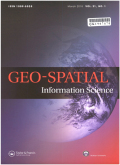- 钛学术文献服务平台 \
- 学术期刊 \
- 基础科学期刊 \
- 天文学、地球科学期刊 \
- 地球空间信息科学学报(英文版)期刊 \
Remote sensing-based estimation of rice yields using various models:A critical review
Remote sensing-based estimation of rice yields using various models:A critical review
基本信息来源于合作网站,原文需代理用户跳转至来源网站获取
摘要:
Reliable estimation of region-wide rice yield is vital for food security and agricultural management. Field-scale models have increased our understanding of rice yield and its estimation under theoretical environmental conditions. However, they offer little infor-mation on spatial variability effects on farm-scale yield. Remote Sensing (RS) is a useful tool to upscale yield estimates from farm scales to regional levels. Much research used RS with rice models for reliable yield estimation. As several countries start to operatio-nalize rice monitoring systems, it is needed to synthesize current literature to identify knowledge gaps, to improve estimation accuracies, and to optimize processing. This paper critically reviewed significant developments in using geospatial methods, imagery, and quantitative models to estimate rice yield. First, essential characteristics of rice were discussed as detected by optical and radar sensors, band selection, sensor configuration, spatial resolution, mapping methods, and biophysical variables of rice derivable from RS data. Second, various empirical, process-based, and semi-empirical models that used RS data for spatial estimation of yield were critically assessed – discussing how major types of models, RS platforms, data assimilation algorithms, canopy state variables, and RS variables can be integrated for yield estimation. Lastly, to overcome current constraints and to improve accuracies, several possibilities were suggested – adding new modeling modules, using alternative canopy variables, and adopting novel modeling approaches. As rice yields are expected to decrease due to global warming, geospatial rice yield estimation techniques are indispensable tools for climate change assessments. Future studies should focus on resolving the current limitations of estimation by precise delineation of rice cultivars, by incorporating dynamic harvesting indices based on climatic drivers, using innovative modeling approaches with machine learning.

推荐文章
Spatial prediction of landslide susceptibility using GIS-based statistical and machine learning mode
Landslide susceptibility mapping
Statistical model
Machine learning model
Four cases
Rapid estimation of soil heavy metal nickel content based on optimized screening of near-infrared sp
Heavy metal
Band extraction
Partial least squares regression
Extreme learning machine
Near infrared spectroscopy
内容分析
关键词云
关键词热度
相关文献总数
(/次)
(/年)
文献信息
| 篇名 | Remote sensing-based estimation of rice yields using various models:A critical review | ||
| 来源期刊 | 地球空间信息科学学报(英文版) | 学科 | |
| 关键词 | |||
| 年,卷(期) | 2021,(4) | 所属期刊栏目 | Articles |
| 研究方向 | 页码范围 | 580-603 | |
| 页数 | 24页 | 分类号 | |
| 字数 | 语种 | 英文 | |
| DOI | |||
五维指标
引文网络
引文网络
二级参考文献 (0)
共引文献 (0)
参考文献 (0)
节点文献
引证文献 (0)
同被引文献 (0)
二级引证文献 (0)
2021(0)
- 参考文献(0)
- 二级参考文献(0)
- 引证文献(0)
- 二级引证文献(0)
引文网络交叉学科
相关学者/机构
期刊影响力
地球空间信息科学学报(英文版)
主办单位:
武汉大学(原武汉测绘科技大学)
出版周期:
季刊
ISSN:
1009-5020
CN:
42-1610/P
开本:
16开
出版地:
武汉市珞瑜路129号武汉大学测绘校区
邮发代号:
创刊时间:
1998
语种:
eng
出版文献量(篇)
958
总下载数(次)
0
总被引数(次)
2719
期刊文献
相关文献
推荐文献
- 期刊分类
- 期刊(年)
- 期刊(期)
- 期刊推荐
力学
化学
地球物理学
地质学
基础科学综合
大学学报
天文学
天文学、地球科学
数学
气象学
海洋学
物理学
生物学
生物科学
自然地理学和测绘学
自然科学总论
自然科学理论与方法
资源科学
非线性科学与系统科学
地球空间信息科学学报(英文版)2022
地球空间信息科学学报(英文版)2021
地球空间信息科学学报(英文版)2020
地球空间信息科学学报(英文版)2019
地球空间信息科学学报(英文版)2018
地球空间信息科学学报(英文版)2017
地球空间信息科学学报(英文版)2016
地球空间信息科学学报(英文版)2015
地球空间信息科学学报(英文版)2014
地球空间信息科学学报(英文版)2013
地球空间信息科学学报(英文版)2012
地球空间信息科学学报(英文版)2011
地球空间信息科学学报(英文版)2010
地球空间信息科学学报(英文版)2009
地球空间信息科学学报(英文版)2008
地球空间信息科学学报(英文版)2007
地球空间信息科学学报(英文版)2006
地球空间信息科学学报(英文版)2005
地球空间信息科学学报(英文版)2004
地球空间信息科学学报(英文版)2003
地球空间信息科学学报(英文版)2002
地球空间信息科学学报(英文版)2001
地球空间信息科学学报(英文版)2000

 免费查重
免费查重










